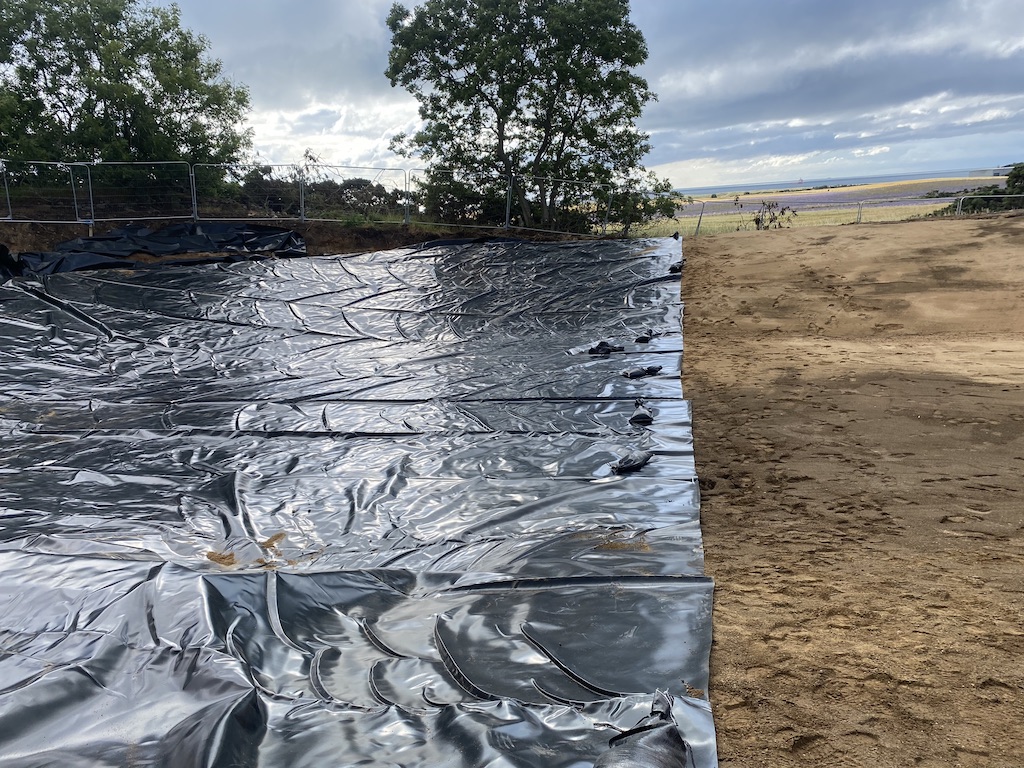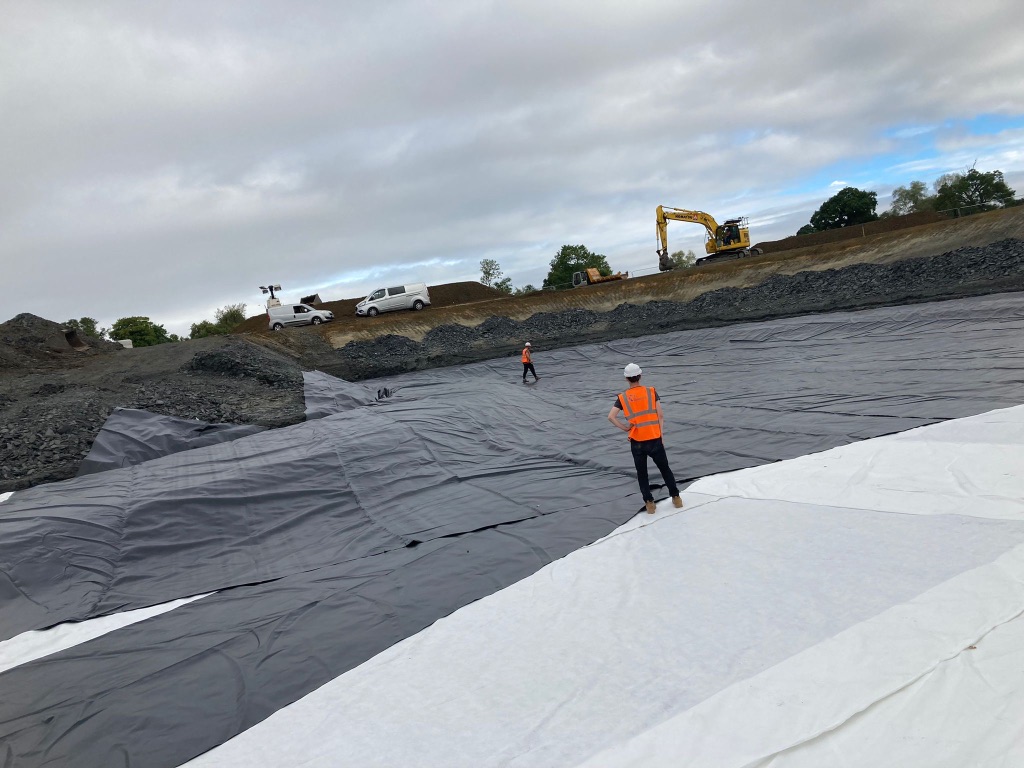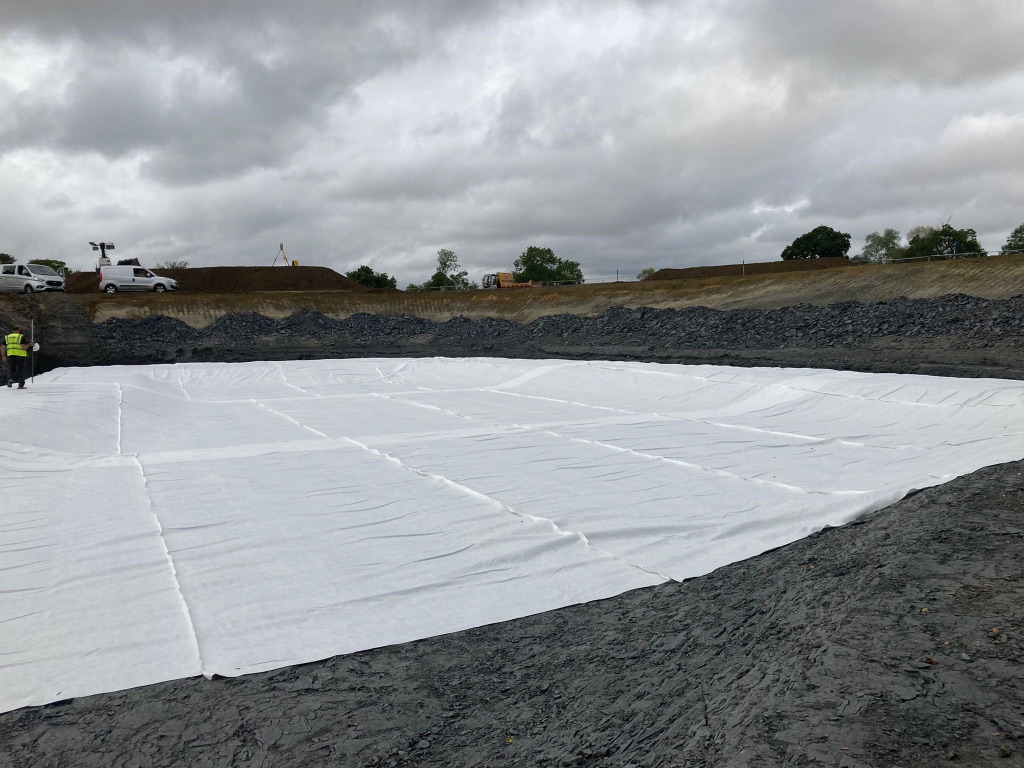Large Pond Liner Picking the right material
Choosing the correct large pond liner for your application can be tricky, particularly since there are so many options available. But, at HBB GeoSales, we use our experience to select the most suitable one for each application. Our customers get the best value from our choices, and we never sell a pond liner which is overspec’d or ineffective for the required application. At HBB GeoSales, we always prioritise our customers’ needs and ensure that we make the right choice for them.
In many cases, we suggest using a reinforced liner for pond liner applications. This is due to its affordability, high mechanical strength performance to low weight ratio, and its ability to be supplied in large, pond specific sized pre-welded panels. These types of reinforced liners offer very high tear, tensile and puncture resistance in comparison to their low weight and nominal thickness, and generally offer a more cost effective solution compared to unreinforced liners, with every roll width required to be welded onsite. It’s important to note that thickness doesn’t always mean better. Due to the high strength to low weight and nominal thickness ratio of reinforced liners, thinner and lighter liners can be used compared to heavier and stiffer unreinforced liners. With reinforced liners being lighter and more flexible, this allows us to supply large, pond specific sized pre-welded panels which generally provide a more cost effective overall solution when supply and installation costs are factored in. However, each situation is unique, and there may be instances where an unreinforced liner is the best option.
Things to consider when looking a pond liner
The most important factor to consider when it comes to water ponds is whether the pond liner will be exposed to sunlight or not. Although it’s unavoidable, sun exposure can be damaging to a pond liner. Large ponds typically have steep slopes that can pose a challenge for covering the pond liner with soils, leaving the liner exposed to the sun. Our range of liners offer varying UV lifespans, and there are also methods available to provide UV and slippage protection for exposed side slopes.
In many cases, Reinforced Polyethylene (RPE) is the most cost effective choice for a liner material. It is very strong and provides higher tear, tensile and puncture resistance than unreinforced liners that are three times thicker. RPE comes in varying thickness, ranging from 0.4 to 1mm. It also offers different levels of UV resistance, with exposed limited warranties up to 20 years available. If you’re wondering which is the best RPE for your needs, please get in touch with us, we’d be happy to help.
Unreinforced Polypropylene is also an excellent choice for exposed liners as it has a lifespan of over 20 years, and despite being more expensive than Reinforced Polyethylene, it certainly offers benefits for certain projects.
Investing in a reliable pond liner provides a durable containment solution that lasts for a long time. High-quality pond liners offer various design options, low maintenance costs, and long-lasting durability. Below, you can find answers to some frequently asked questions to help you make an informed decision about your pond liner needs.
Is underlayment necessary for a pond liner?
Yes, it is recommended to use a geotextile underlayment to protect the liner from being damaged under the weight of the water. While the liner is chosen for its impermeability, the underlayment is chosen for its puncture resistance.
How much overlap is required for a pond liner?
Typically, a larger pond will require more overlap, while a smaller one will require less. For large ponds, an additional 1m of liner at all edges is recommended to bury in the securing anchor trench that holds the liner edge. It’s important to ensure that the edges of the material are fully covered to prevent any weather elements from getting under the liner.
Is it possible to join a pond liner?
It requires a high level of skill to weld a pond liner made up of multiple pieces. The best way to join pond liners is through precision welding in a controlled environment, which significantly reduces, and on some occasions, completely removes the need for onsite welding.
Which type of liner is best for a pond?
Which liner option is the most suited, is very much down to job specifics. With our in-house experience, we will consider each job on a case by case basis, and recommend the most suitable option from our extensive range.
What is the lifespan of a pond liner?
When you invest in a high-quality large pond liner, it should last for at least 20 years when exposed, and much longer when buried. To ensure quality, choose a supplier and installer who offer a 20-year warranty. This will protect you in case of premature liner failure.
If you have questions, or you need help to choose the right pond liner for your needs, please contact HBB GeoSales. Our experts will guide you to the best value pond liner for your application.





